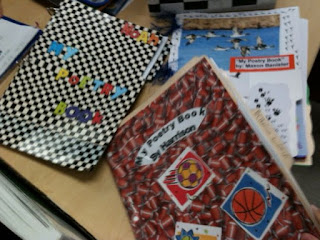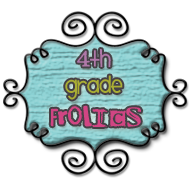Is the piece you read a biographyor autobiography? How canyou tell?
What do you know about biography and autobiography?
What is the purposefor reading a biography or autobiography?
This biography reminds me of______.
This autobiography reminds me of________.
How does comparing a biography with a fictional piece helpyou understand the text?
What do the meanings of the words graph have in common?
How do affixes and root words help readers understand text?
How do authors use an interview to gather information?
How can listening and speaking help me as a reader andwriter?
What seems similar about this story and the biography? Whatseems different?
What do readers do when they come to a word they don’t know?
What strategies do readers use to help with comprehension?
What information have you gathered and how have you gatheredit?
Why do authors use appropriate conventions?
How do writers create interesting sentences?
Why do readers and writers use dictionaries?
What strategies did you use to help you understand the text?
How do you readers show understanding of text by writing?
What events or experiences in the person’s life werepresented? What design techniques were used?
How could the following simple sentences be combined to makeone combined sentence?
What was the message of this piece of media?
How did the design technique influence the message?
How does studying words help us as readers and writers?
How do readers understand text by writing?
What am I wondering?
What questions do I have about this text before reading?
What questions come up as I read?
What questions do I still have after reading?
What does it mean if a word is singular or plural?
What events or experiences in the person’s life werepresented? What design techniques were used?
What did you notice about words that only have an –es?
What happened to the “y” in the words ending in –es?
Can you give me other words that fit each pattern/rule?
How can studying words help us as readers and writers?
How and why do authors edit their writing?
What was the text mostly about?
What is a good summary for the text?
What does it mean to summarize or write a summary?
What makes a good summary?
How do readers use story structure and elements tounderstand fiction?
Why do authors publish their work?
What does the text remind you of?
What personal connection did you make with the text?
Did the text remind you of something else you’ve read?
Did the text remind you of something happening in the worldor community?
What do you hear that is the same in each word?
What two letters usually make the /sh/ sound ?
How has thinking about the story’s structural elementshelped you understand the story?
How do authors generate ideas for writing?
Are these words singular or plural and how do you know?
How did the word change?
What strategies can writers use to generate ideas forwriting?
How can the elements of drama help us understand the story?
What features do you see in a play?
How does knowing base words and affixes help us as readersand writers?
What structural elements do you expect to find in drama?
How did the author use sensory language like similes andmetaphors to help you understand thetext better?
What are guidewords? How are guidewords used?
How do we use a dictionary effectively?
How does writing about reading help you understand the text?
How does an author develop an engaging story?
What are some other reasons people use dictionaries?
How do movies and television programs tell a story to theiraudience?
What is the same about these types of text s?
What is different about these types of texts?
What type of prepositional phrase could be added to thesentence to help the reader mentalpicture?
What did you learn about the character through the dialoguethat was read?
What did the dialogue tell us about the characters?
What are some examples?
What are adjectives and what are they used for?
What are adverbs and what are they used for?
What is a setting?
How do movies, plays, and TV shows portray setting to telltheir story?
What did you learn about the setting of the story?
Describe the setting.
Why do you think the author used dialogue?
What is plot?
What is the difference between /there/, /their/, and/they’re/?
What is the difference between /to/two/too/
What is the difference between /your/you’re/
What is the difference between /its/it’s/
What is the problem?
What events affect the problem?
How was the problem solved?
What is a homophone?
Why do we need to know about homophones as readers andwriters?
What transition words could you use to help the readerunderstand the sequence?
Where could you make a compound sentence?
What is a theme?
What did you learn from the theme of the story?
Describe the theme?
What does the author want you to think or do?
Why did the author write the text? How do you know?
What is the central, or main idea of the story?
What details support the main idea?
How did the author use language to influence the reader?
What strategies do readers use to understand text?
How does writing about reading support understanding of thetext?
How can studying spelling patterns help us as readers andwriters?
How do authors organize information to create meaning?
What was the text mostly about? What were the supportingdetails?
What does it mean to sort words? Why do we sort words?
How can a writer organize ideas in an expository text?
How does thinking about details, main ideas, and summaryhelp us as readers?
What do you think the text will be about? Why do you thinkthat?
What do you notice about the topic sentence in an expositorytext?
What was the main idea of the beginning of the text?
What was the main idea of the middle of the text?
What was the main idea of the ending of the text?
How do readers use text structure to organize informationand construct meaning?
How does studying the meaning and spelling of words help usas readers and writers?
How can readers determine the meaning of multiple meaningwords when reading?
Why do readers need to be able to distinguish facts andopinions?
What do you notice about concluding sentences in the expositorytext?
How can the word _______ be used in different context?
Does your concluding sentence summarize the central idea ofyour composition?
How will we find reliable and relevant information to answerour questions?
What is revision?
How did you use the skills of skimming and scanning to findrelevant information?
How did the text structure help you interpret the relevantinformation?
Which analogy represents a synonym and which analogyrepresents an antonym?
What is research?
What are topics you may want to research and learn moreabout?
What are text features? How do text features help readers?
Why did the author write this text? Why would a reader readthis text?
Which questions would give the researcher more information?
How will you find answers to your research questions?
How can we take the information and summarize it in our ownwords?
What is plagiarism?
What is the main point of my research?
What research question does this information relate to?
How do text features help you as a researcher?
What is one important and /or interesting fat that you foundabout your topic?
How do you summarize the main idea and details to answer thequestions in your own words? Why is this important?
How are you using a variety of resources?
What information do you need to gather to cite your sourcesfrom shared and independent reading?
How do researchers organize their findings around a purpose?
Why did the author write the text?
Why would a reader read the text?
Was the purpose stated in the introduction or was the readerable to imply it?
What other thinks do you notice about the introduction ofthe text?
How can making connections with the text help withcomprehension?
How do readers determine the main idea of a text or sectionof a text?
Based on the important details, what is the main idea of thesection of the text?
How can writers use their knowledge of roots and base wordsand prefixes and suffixes to spell words?
How do text features help readers?
What connections can be made between the two types of text?
What are the steps in researching a topic?
What went well for you and what was challenging in doingyour research?
The reader can tell________________because_____________________________.(Inferencing)
What do the words connect and connection mean? How doreaders make connections to text?
What inference did you make?
What do I do well as a writer? What do I need to improve on?
How are the poems alike? How are they different?
***What formwas your poem? How do you know? What structuralelements did your poem have?
What will you do to improve as a writer?
How do authors generate ideas for writing?
Is this story written in first or third person?
How are the characters alike? How are they different?
How were their experiences alike or different?
Why is it important to examine characters interactions ,relationships, and changes when reading fiction?
How are the characters similar? How are the charactersdifferent?
What strong feelings did you discover as your wrote?
What was the theme or message in the story?
How does knowing the plot of a story help the reader?
What elements of a character can a reader analyze afterreading a traditional/classical literary text?
How does a plot line help you understand the text?
What is the same about these two genres? What is differentabout these two genres?
What connections did you make across the drama and fictionaltext?
What do writers do to improve the quality of their personalnarratives?
How do writers spell base words and roots with affixes?
How o authors develop an engaging story that sustains thereader’s interest?
How do poems convey their theme or message?






























































